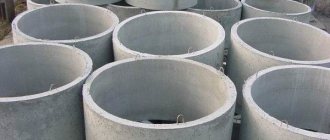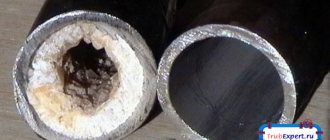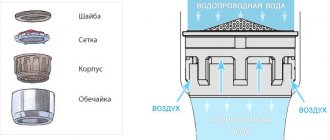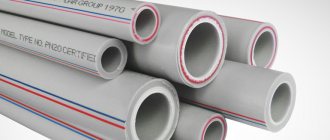What is caustic soda?
Caustic soda is primarily an alkali that can corrode organic matter, while it is an excellent stain remover. Compared to baking soda and soda ash, caustic soda has a greater cleaning effect. Caustic soda is produced in the form of a powder, in which you can see small crystals and flakes, painted white. In addition, the powder does not have any odor, and the size of the grains does not exceed 1-1.5 mm.
Compound
Caustic soda consists of oxygen, sodium and hydrogen molecules, as evidenced by the structural formula of the substance NaOH. It will not be possible to find caustic soda in its pure form; it is obtained industrially from a solution of table salt. At the same time, the norm for caustic soda is considered to be no less than 98.5%. Caustic is produced both solid and in liquid form. Transported in bags or special containers.
Solid caustic, when dissolved in water, is capable of generating heat. You should use caustic with caution, as caustic soda can be harmful to health if safety rules are not followed.
Operating principle
The principle of action of caustic soda is that when it comes into contact with fatty deposits, it dissolves the fat, and if you use it when cleaning sewers, it can easily cope with organic substances that accumulate on the walls of pipes.
If caustic soda is poured into the clogged area, it will soften it, and the problem will be solved in a short period of time. After peeling off the resulting blockage and exposure to the substance, it is washed with water, pushing the blockage further along the pipe opening.
Are caustic soda and soda ash the same thing?
Caustic and soda ash are two different substances, but they are united by their alkaline origin and base. The main difference between one soda and another is its chemical composition, as well as its effectiveness. It is known that soda ash is not very effective in dealing with blockages in the sewer; when using it, there will be practically no effect. Caustic soda can deal with this problem in an instant.
Caustic soda is an alkali, and soda ash is practically the same baking soda that many people use for baking and at home.
Industrial Applications
Caustic soda is widely used in industry
The chemical is widely used in industry:
- caustic sodium is added to creams, cleaning products, powders, soaps, shampoos, and means to remove blockages;
- it is used for the production of fiberboards, cardboard and paper;
- sodium hydroxide - emulsifier E 524, which allows you to achieve a crispy crust, it is used for the production of chocolate and ice cream;
- the chemical is used for etching aluminum as an indicator for titration;
- caustic soda is used for bleaching fabrics, including linen, and making silk;
- Caustic solutions are used in food industry enterprises as a cleaning agent for washing greasy surfaces and peeling fruits;
- sodium hydroxide is used to disinfect ponds and livestock farms; in agriculture it is used as a fertilizer and to control pests that cause plant diseases;
- In caustic construction it is used to strengthen the foundation.
In addition, sodium hydroxide is used to purify oil and water, and to produce chloramine and biodiesel.
There is caustic soda in the photograph developer.
What is caustic soda used for in everyday life?
In agriculture
In agriculture, caustic soda is used to disinfect premises where livestock are kept. At the same time, not only the territories are processed, but also all equipment.
Removing scale and deposits from dishes
Caustic does an excellent job of removing scale and deposits that form on dishes. You can do this as follows:
- To 10 liters of water, add 200 g. caustic.
- Grind 20 gr. laundry soap and add to the soda solution.
- Mix thoroughly until the ingredients are completely dissolved.
- Add 150 ml of office glue to the dishes that you plan to clean.
- Stir, put on fire and bring to a boil.
- It is recommended to boil dishes with scale and carbon deposits in this solution for 1–2 hours.
- Remove the dishes from the solution and wash with detergent.
- Rinse in running water.
This method is suitable for cookware made of enamel, cast iron and steel. It is under no circumstances recommended to clean Teflon coatings and aluminum utensils with caustic soda.
Making homemade soaps and detergents
You can use caustic soda to make homemade soap or cleaner. Recipe:
- In 150 gr. distilled water, brought to a boil, dilute 70 g. purified caustic soda.
- Flaxseed, sea buckthorn or almond oil, 0.5 kg is enough, heat in a water bath.
- Add it to the soda solution.
- To stir thoroughly.
- Pour into prepared pans.
- Keep in a dry place for several days, then remove the finished soap.
Removing blockages, cleaning drains
Some housewives clean sewers using caustic soda for a private home. This method effectively copes with any blockages.
- In a 4-liter container with cold water, add 200 g. caustic.
- To stir thoroughly.
- Pour it down the drain.
- Do not use the toilet for 1–2 hours, as the water from the flush can wash away the caustic soda and there will be no positive effect.
- After this time, rinse with 15 liters of hot water and pour it into the drain.
Cesspool cleaning
When cleaning cesspools, the proportions of substances depend directly on its size and depth.
For the procedure you will need:
- Protective gloves.
- Shovel.
- Bucket.
- Respirator.
The procedure is carried out as follows:
- 3-4 kg of caustic soda is poured into a bucket.
- Pour in 5–7 liters of water.
- Mix thoroughly.
- Pour into the cesspool.
- The procedure is carried out until the pit is completely cleared.
For disinfection
Caustic is also used for disinfection during wet cleaning.
Caustic soda in other areas
Caustic soda is used in many applications. For example, in veterinary medicine I use it to disinfect animal premises; in addition, it is used in the food, textile, pulp and paper, chemical and automotive industries. Let's take a closer look.
Use in veterinary medicine
Caustic soda is used to disinfect premises where livestock are kept. Veterinarians recommend treating these areas daily with a concentrated caustic solution. The permissible dosage of caustic soda concentration is 1%, and if animals have infectious diseases, it is increased to 10%.
Industrial Applications
In industry, caustic is used in the following industries:
- Based on it, the food additive E-524 is prepared, which is subsequently used for the preparation of chocolate products, ice cream and various drinks.
- In the production of silk products and for bleaching fabrics.
- They produce paper and cardboard.
- Manufacture of detergents.
- In the production of car batteries and fuel.
Operating principle
Caustic sodium has an aggressive effect on various types of contaminants. It dissolves dirt and softens the plaque layer. After the substance has worked for several hours, you need to pour a large amount of water into the pipeline to wash away the contaminants.
Caustic soda can be used to dissolve organic waste in plastic pipes. Polymers are inert materials that do not react with chemicals. Dirt slowly accumulates on the smooth plastic walls.
Sewer plastic pipes (Photo: Instagram / armada_tmb)
Advantages and disadvantages
Caustic soda has both advantages and disadvantages.
Advantages:
- Quickly and effectively copes with organic contaminants.
- Has a simple application for cleaning drains.
- Completely soluble in water.
- It is not capable of harming plastic, cast iron, rubber and other materials used in sewerage parts.
- Quite a low price for the substance.
Flaws:
- Caustic soda is a substance that has a strong effect and quite high toxicity.
- Affects only organic substances.
- Has a negative effect upon contact with galvanized, aluminum and enamel coating.
- The substance should be stored only in closed form.
- Short shelf life, only 12 months.
How to use soda to get rid of blockages?
Using soda to deal with clogs is quite simple, the main thing is to follow the instructions. And they do it like this:
- Pour 150 grams into the drain. caustic soda.
- Pour 2 liters of boiling water.
- Leave for 15–20 minutes.
- After this, add another 2 liters of hot water.
- Do not use the bathroom for an hour.
- Rinse the drain with 15–20 liters of water.
Cleaning with solution
To combat the blockage, it is necessary to properly prepare the solution. And you can do it like this:
- Add 2-3 kg of caustic to 8 liters of water.
- Mix thoroughly until the granules are completely dissolved.
- Slowly pour half the solution down the drain.
- After a few hours, pour out the rest.
- Flush the drain with plenty of running water.
Powder cleaning
To combat blockages using caustic soda powder, simply pour a small amount of the substance into the toilet bowl and add plenty of water. This must be done with caution, as this method can damage the sewer pipes and this can lead to leakage. Therefore, experts recommend using a small amount of the active substance and then caustic soda will do an excellent job not only with the blockage, but also corrode all the organic matter deposited on the walls of the pipes.
Gel cleaning
Clearing the blockage using a gel based on caustic soda is a less safe method, unlike the previous option. To clean, you need to mix 100 ml of gel with 250 ml of boiling water, mix thoroughly and pour into the sewer hole. Leave for several hours, then rinse with plenty of running water.
Is it possible to clean plastic pipes with caustic soda?
Cleaning plastic pipes with caustic soda is highly not recommended. It should be remembered that this substance is an alkali and may well harm the plastic product. It is better to figure out the reason why the blockage occurs periodically or use more gentle means.
Cleaning the cesspool
Peculiarities. Getting caustic into the soil has a negative effect on the soil. Therefore, the pit must be absolutely sealed and have a proper ventilation system.
Your actions
- Prepare the solution according to the same principle as described above for sewer pipes. Depending on the size of the pit, 2-4 kg of caustic soda will be required.
- Fill the drainage hole with the mixture.
- As a rule, the active period of the product lasts about four minutes.
- The cycle must be repeated twice.
How to flush a radiator with caustic soda?
You can only flush the radiator with caustic soda if it is made of cast iron or chrome-nickel steel. It is prohibited to use this method for radiators made of aluminum, iron, tin, zinc or lead, since when interacting with this metal, the caustic becomes an explosive substance.
Radiator flushing method:
- Flush the radiator in the summer, after turning off the heating completely.
- To do this, use a pump to pump a 15% caustic soda solution into the radiator.
- Leave the substance inside the heating device for 2–3 days.
- Drain the solution and wash with plenty of water.
Precautionary measures
Caustic soda is classified as a potent substance of the second hazard class. When using it, precautions must be followed.
Caustic soda should not be touched with your hands. When working with it, use a spoon or carefully pour the substance out of the bag.
Contact of caustic soda on the skin can result in burns. If the substance gets on open areas of the body, they are washed with plenty of running water and treated with boric or acetic acid (low concentration).
If caustic alkali gets into your eyes, wash them with water and seek help from a specialist. A burn to the retina can lead to vision loss.
If caustic gets into the body, drink large amounts of water and induce vomiting.
When working with caustic soda, avoid skin contact with the substance. All work is carried out wearing rubber gloves and closed overalls (apron or rubberized suit). Eye protection is also used - chemical splash glasses. When working with caustic soda, protect the respiratory system with a gas mask or respirator.
How to fertilize garden trees with caustic soda?
Many gardeners treat garden trees with caustic soda in order to save them from diseases such as late blight, powdery mildew, black spot, and various fungi. This method differs from others in that it is quite cheap and effectively copes with the disease, increasing the abundance of the crop.
To treat trees and shrubs, you need to mix 10 liters of water and 5-6 tbsp. l. caustic, mix and water the plants. Greenhouses are also treated with this solution for disinfection before planting seedlings.
How to clean dishes with caustic soda?
To clean the dishes, you need to do the following:
- Pour water into the contaminated container.
- For every 10 liters, you will need 200 grams. caustic.
- Add laundry soap, grated on a fine grater.
- Pour in 150 gr. office glue.
- Carefully move the solution.
- Place on fire and bring to a boil.
- Cook for 1.5-2 hours.
- Pour the solution into the sink.
- Wash dishes with detergent.
- Rinse thoroughly in running water.
This method is used for pots, pans and plates. The main thing to remember is that after the solution boils, it is recommended to keep the dishes in it for no more than 20 minutes.
Safety regulations
When using caustic soda, the following safety precautions must be observed:
- Use a respirator and protective gloves.
- Store the substance in a dark place out of reach of children and animals.
- Use strictly according to the instructions, observing the proportions.
Storage requirements
It is recommended to store caustic soda in a dry and dark place in an airtight container. The lid must be tightly closed, and exposure of the substance to sunlight should be avoided. It is better to choose a storage place such that neither animals nor children can reach it.
Possible consequences
Improper storage may result in poisoning of pets, who may accidentally ingest small amounts of the substance. And if a child gets to the caustic, he may well get a burn to the skin or mucous membrane. In these cases, you should definitely seek help from a doctor. You should pay attention to the expiration date; after it expires, the caustic becomes less effective and it is better to avoid using it.
What things can be soaked in caustic soda?
You can soak white clothes in caustic soda. Since this substance is alkaline, it will do an excellent job with difficult to remove stains. It is not recommended to soak linens made of cotton and other delicate fabrics; caustic acid can damage them.
Can caustic soda be used to wash your hands?
Caustic soda can be used to wash your hands, but you must first dilute it in water and then start washing. To prepare a solution for 5 liters, 1–2 tbsp is required. l. caustic, if you put more alkali, a burn may appear on the skin. Caustic handwash is used as an antiseptic.
What to do in case of a caustic burn?
If caustic gets on the mucous membrane, it is recommended to rinse the area with 2% boric acid, and if it gets on the skin, then 5% vinegar, diluting both substances in a small amount of cold water. Only after this can you begin to treat areas with caustic burns.
Although caustic soda is a dangerous chemical, the effectiveness of its use is unlikely to leave anyone indifferent.
The main thing is to follow the instructions and strictly observe the proportions, and then no problems will arise, and your dishes and drains will not need to be cleaned for a long time. Did you like the article? Was she helpful?
Precautionary measures
- Caustic soda is a potent substance; in terms of its danger to humans, GOST classifies it as the second hazard class.
- The crystal powder should not be taken by hand; it should either be carefully poured out of the bag or a spoon should be used.
- Contact with skin results in burns. In this case, wash the affected area of skin with water, weakly concentrated solutions of boric or acetic acid.
- The greatest danger is if the solution gets into the eyes, resulting in loss of vision. Measures are taken immediately: the eyes are also washed, first with the above solutions, then with water.
- Therefore, it is better to protect yourself from direct contact with caustic sodium using personal protective equipment: rubber gloves, special goggles for eye protection, and overalls.











